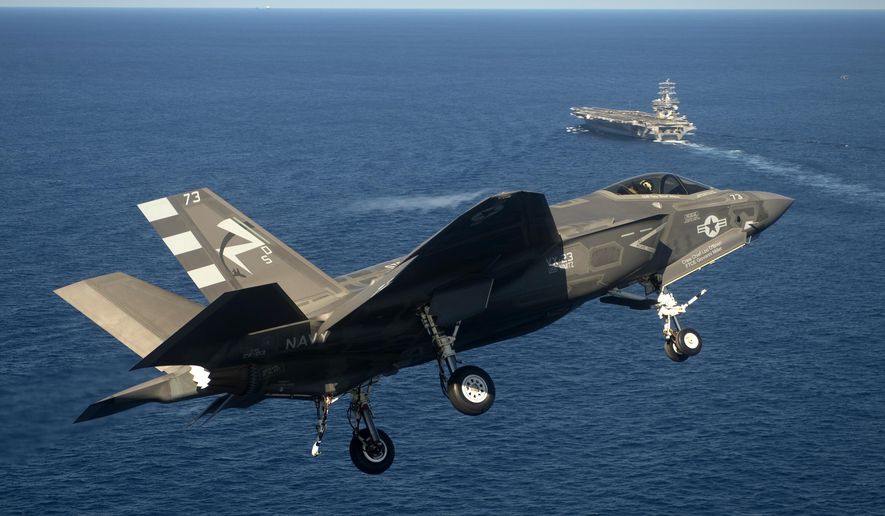The U.S. Navy is looking to the past for a possible solution to its current aircraft carrier problems.
Borrowing an idea employed in World War II, the service is seriously looking at retrofitting smaller ships normally used to transport Marines into battle. Instead of troops, the new “Mini Carriers” would have a squadron of F-35B Lightning II jet fighters.
“I have a demand for carriers right now that I can’t fulfill,” Secretary of the Navy Richard Spencer said Wednesday in a briefing for reporters at the Heritage Foundation.
While aircraft carriers are the centerpiece of the Navy’s forward-deployed military strategy, they are expensive. The U.S.S. Gerald Ford — the first in the Ford class of supercarriers — cost about $12 billion.
Mr. Spencer said the U.S. military’s combatant commanders want the overwhelming combat power aircraft carriers give them.
“Part of the mission of the carrier is presence and forward deployability,” he said.
In World War II, the Navy augmented their fleet with a class of ships called escort carriers, sometimes known as “Jeep Carriers” or “Baby Flattops.” They were smaller and carried fewer aircraft but cheaper and quicker to build. While they couldn’t keep up with fast-moving invasion fleets, escort carriers accomplished a variety of missions including protecting convoys from U-boats in the North Atlantic campaign.
It’s a concept the U.S. Marine Corps has been studying to see if there are modern applications. They are looking to see if an amphibious assault ship called an LHA could be adapted to serve as a new “Jeep Carrier.”
The idea would be to remove the ground troops from a Marine Expeditionary Unit and replace them and their equipment with additional F-35B Lightning II aircraft capable of vertical and short takeoff and landings. It would be possible to have more than 20 such aircraft on an LHA like the U.S.S. America, Mr. Spencer said.
“They’ve already marked it out [on an LHA]. They did it as a cerebral exercise,” Mr. Spencer said.
And if hidebound elements in the Navy don’t like the idea, that’s too bad, he said.
“Stand by for a new [Chief of Naval Operations] who is going to tell them to like it,” Mr. Spencer said.
It’s an informal, out-of-the-box approach that he’d like to see more top Navy and Marine Corps officials take.
The timeline? “I’d like to see this sooner rather than later,” Mr. Spencer said.
• Mike Glenn can be reached at mglenn@washingtontimes.com.




Please read our comment policy before commenting.